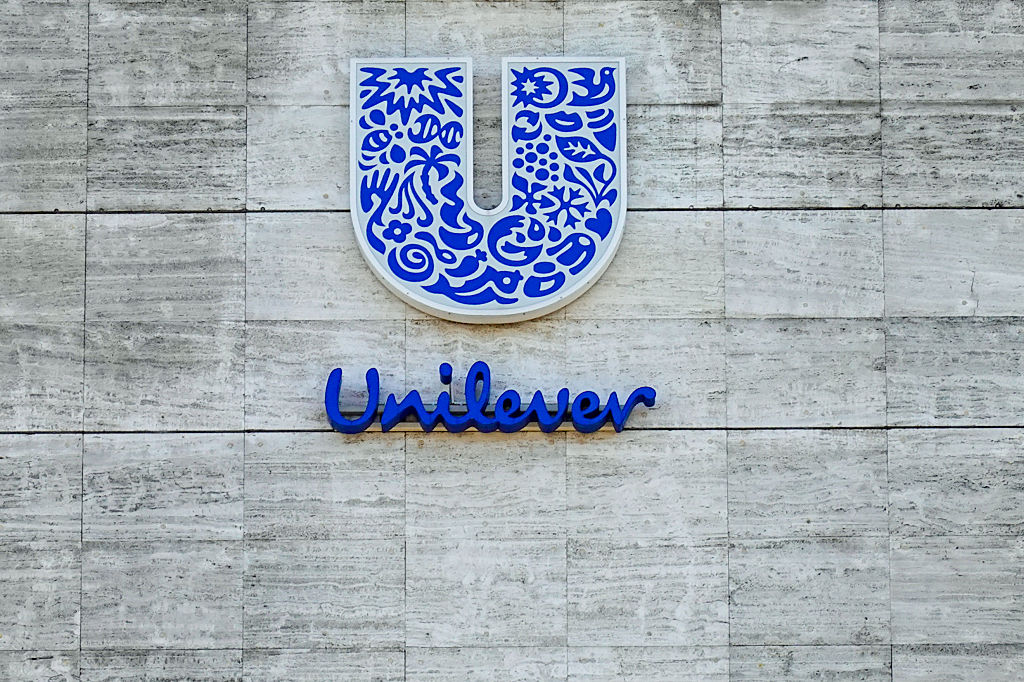How have central banks evolved in the last century – and are they still fit for purpose?
The rise to power and dominance of the central banks has been a key theme in MoneyWeek in its 25 years. Has their rule been benign?

How has monetary policy shifted?
Over the past 25 years, monetary policy in advanced economies has undergone an astonishing, unprecedented transformation – dramatically changing in both scope and scale, and blurring the boundaries with fiscal policy. When MoneyWeek published its first edition, there was a broad consensus on inflation targeting, operational independence for central banks and faith in the ability of short-term interest rates to stabilise output and prices. But those turbulent 25 years have seen a radical shift. From the “Greenspan put” to quantitative easing (QE – printing money to buy government debt), monetary policy has evolved in ways that are highly controversial and politicised. Central banks today have vastly higher balance sheets, in some cases manage entire yield curves (that is, use policy to influence rates across different maturities of government bonds, not just short-term rates) and openly coordinate with fiscal authorities in emergencies.
Why is this controversial?
Because, critics argue, the gigantic balance sheets held by unelected central banks as the result of QE, and their “unconventional” monetary policies, have inflated asset-price bubbles, fostered inequality, led to misallocation of capital, and masked unsustainable public finances. Long-term, the chief purpose of monetary policy is to inspire confidence in the value of money by encouraging price stability. In the short or medium term, the aim of policy is to keep the real economy stable – supporting sustainable growth and employment – and to contain risks. Since the turn of the century, however, independent central banks have radically over-interpreted that brief by consistently coming to the rescue of equities and debt markets in ways that have distorted business cycles and deferred pain. Emergency measures have become the norm, and central banks have ballooned.
How have central banks expanded?
For almost the whole of the 20th century, the central-bank assets of advanced economies, as a proportion of economic output, remained remarkably constant, at around 10%-13% of GDP. But in the aftermath of the great financial crisis of 2007-2008 – as governments everywhere turned to QE – that proportion surged, rising above 20% in 2009-2010. And rather than falling back to normal levels as the crisis stabilised, that proportion then doubled once more during the 2010s to 40% – before spiking up to 70% in the aftermath of Covid. Even by 2024, it was still 50%. That’s a revolutionary change in the size of central banks’ financial assets within a couple of decades. Historically, balance sheets merely reflected operations. Now, they are strategic levers shaping long-term yields and risk premiums – a fundamental conceptual shift.
MoneyWeek
Subscribe to MoneyWeek today and get your first six magazine issues absolutely FREE

Sign up to Money Morning
Don't miss the latest investment and personal finances news, market analysis, plus money-saving tips with our free twice-daily newsletter
Don't miss the latest investment and personal finances news, market analysis, plus money-saving tips with our free twice-daily newsletter
Was QE justified?
Yes, in the immediate aftermath of the financial crisis, decisive action by central banks was vital in stabilising economies and preventing deflation, says Andy Haldane in the Financial Times. By contrast, “later-stage QE, including purchases made in response to Covid, is harder to justify. With fiscal policy highly expansionary, QE’s primary purpose was to placate fretful bond markets rather than boost inflation” – a worrying step towards “fiscal dominance”. Vincent Reinhart, the chief economist at BNY Investments, co-authored two research papers on QE with Ben Bernanke, chairman of the Federal Reserve from 2006-2014, who instituted QE following the financial crisis. “We did not include a section on how to get out of the policy, or the risks stemming from it,” he now says. “That was a mistake – it was a lot stickier than I thought going in and has opened up a range of complications and potential political influences on monetary policy.”
So it’s been hard to get out of?
Indeed. The current era of gigantic public debt has blurred the lines between monetary and fiscal policy, since rate rises (or quantitative tightening) put up debt-servicing costs and infuriate the likes of Donald Trump. In the UK, quantitative tightening triggers indemnities that require the Treasury – ultimately, the taxpayer – to cover central-bank losses. In addition, by pushing up gilt yields, it makes it more expensive to the Treasury to borrow and service its debts. That makes monetary policy more politically charged than ever, and the target of populists who regard central bankers as sources of unelected and illegitimate technocratic power.
What are the limits on monetary policy?
Conventional monetary policy is a famously blunt tool. It has become blunter in recent decades. Financial globalisation and the absorption of China into the global economy, technological change and demographic ageing have lowered real rates. There’s been a relative decline in floating rate debt, meaning rate changes do not necessarily feed through into the wider economy. And rate-sensitive capital-intensive sectors, such as manufacturing and construction, have diminished in favour of services, which are more labour-intensive and less responsive to interest rates, says Marco Casiraghi, director at Evercore ISI. All of this makes monetary policy harder to frame and execute with confidence.
A tough gig, then?
The Bank for International Settlements says that everyone, from governments to central banks to investors and consumers, needs to become more realistic about monetary policy. The idea that it alone can underpin growth is an “illusion”. And the trade-offs that monetary policy involves will “become unmanageable” without “more holistic and coherent policy frameworks in which other policies – prudential, fiscal or structural – play their part”. Central bankers may be even more powerful than 25 years ago. But in an ever more complex and turbulent century, even they recognise that they are not magicians.
This article was first published in MoneyWeek's magazine. Enjoy exclusive early access to news, opinion and analysis from our team of financial experts with a MoneyWeek subscription.
Get the latest financial news, insights and expert analysis from our award-winning MoneyWeek team, to help you understand what really matters when it comes to your finances.
Simon Wilson’s first career was in book publishing, as an economics editor at Routledge, and as a publisher of non-fiction at Random House, specialising in popular business and management books. While there, he published Customers.com, a bestselling classic of the early days of e-commerce, and The Money or Your Life: Reuniting Work and Joy, an inspirational book that helped inspire its publisher towards a post-corporate, portfolio life.
Since 2001, he has been a writer for MoneyWeek, a financial copywriter, and a long-time contributing editor at The Week. Simon also works as an actor and corporate trainer; current and past clients include investment banks, the Bank of England, the UK government, several Magic Circle law firms and all of the Big Four accountancy firms. He has a degree in languages (German and Spanish) and social and political sciences from the University of Cambridge.
-
 What are my retirement income options?
What are my retirement income options?We’re all told to save into a pension, but there’s widespread confusion about how to take an income from our savings and investments at retirement, a new study has found. We look at your retirement income options.
-
 UK interest rates: will the Bank of England lower rates?
UK interest rates: will the Bank of England lower rates?The Bank of England’s Monetary Policy Committee’s (MPC) final interest rates meeting of the year takes place tomorrow (18 December) and most experts expect a cut
-
 British blue chips offer investors reliable income and growth
British blue chips offer investors reliable income and growthOpinion Ben Russon, portfolio manager and co-head UK equities, ClearBridge Investments, highlights three British blue chips where he'd put his money
-
 Coreweave is on borrowed time
Coreweave is on borrowed timeAI infrastructure firm Coreweave is heading for trouble and is absurdly pricey, says Matthew Partridge
-
 Renewable energy funds are stuck between a ROC and a hard place
Renewable energy funds are stuck between a ROC and a hard placeRenewable energy funds were hit hard by the government’s subsidy changes, but they have only themselves to blame for their failure to build trust with investors
-
 Profit from document shredding with Restore
Profit from document shredding with RestoreRestore operates in a niche, but essential market. The business has exciting potential over the coming years, says Rupert Hargreaves
-
 The war dividend – how to invest in defence stocks as the world arms up
The war dividend – how to invest in defence stocks as the world arms upWestern governments are back on a war footing. Investors should be prepared, too, says Jamie Ward
-
 Literacy Capital: A trust where great returns fund a good cause
Literacy Capital: A trust where great returns fund a good causeThere’s plenty to like about specialist private-equity trust Literacy Capital, says Max King
-
 An AI bust could hit private credit – could it cause a financial crisis?
An AI bust could hit private credit – could it cause a financial crisis?Opinion Private credit is playing a key role in funding data centres. It may be the first to take the hit if the AI boom ends, says Cris Sholto Heaton
-
 8 of the best ski chalets for sale now
8 of the best ski chalets for sale nowThe best ski chalets on the market – from a traditional Alpine-style chalet in Switzerland to an award-winning Modernist building in Japan’s exclusive ski areas